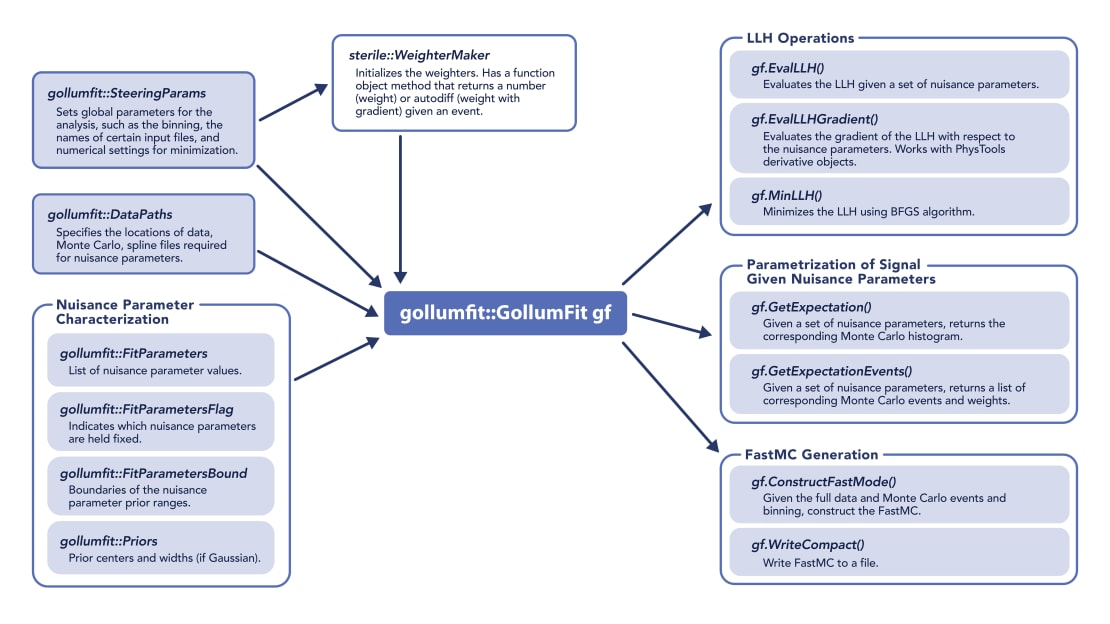At the South Pole, there exists the IceCube Neutrino Observatory, a gigaton-scale detector that detects tiny, nearly massless particles called neutrinos. Neutrinos can travel unhindered through space and, thus, can help uncover otherwise obscured parts of the universe.
Many IceCube analyses study a diffuse neutrino flux—coming from all directions across the entire sky—that originate mostly from atmospheric showers caused by cosmic rays colliding with the Earth’s atmosphere (atmospheric) or sometimes from cosmic sources like our own galaxy or supernovae (astrophysical). Although these neutrinos are described by common variables, such as their energy and direction, their studies also have many systematic uncertainties. For physics experiments like IceCube that collect large quantities of data, analyzing this data often uses a likelihood-based approach to find the best fit to the data.
In a report submitted to Computer Physics Communications, the IceCube Collaboration presents an open-source analysis framework called GollumFit that incorporates model parameters common to any neutrino telescope and applies a likelihood-based approach while also taking into account common systematic uncertainties. It excels in situations where a multidimensional fit is required and is able to accurately and quickly recover the best-fit values.

Credit: Alexa Nelson, IceCube
GollumFit works by taking a set of data and comparing it to a corresponding set of simulated events by calculating a likelihood. It does this by computing the effects of common systematic uncertainties on these simulated events after compressing them to speed up computation without sacrificing accuracy. GollumFit then minimizes this likelihood to produce a set of parameters that best describe the data.
“GollumFit provides an accessible software package that researchers can readily use,” says Alex Wen, a PhD graduate student at Harvard University who contributed to the code for GollumFit. “It is a fast and reliable way to derive conclusions about diffuse neutrino emission.”
Improvements to GollumFit are already underway, including possibilities to add new parameters that describe more complex data and new systematic uncertainties.
“With GollumFit being open source, it is very customizable for different diffuse neutrino analyses and experiments, thus proving immensely helpful for the community,” says Harvard University professor Carlos Argüelles-Delgado.
The official documentation page for GollumFit can be found here: https://docs.icecube.aq/gollumfit/main/index.html.
+ info “GollumFit: An IceCube Open-Source Framework for Binned-Likelihood Neutrino Telescope Analyses,” IceCube Collaboration: R. Abbasi et al. Submitted to Computer Physics Communications. arxiv.org/abs/2506.04491